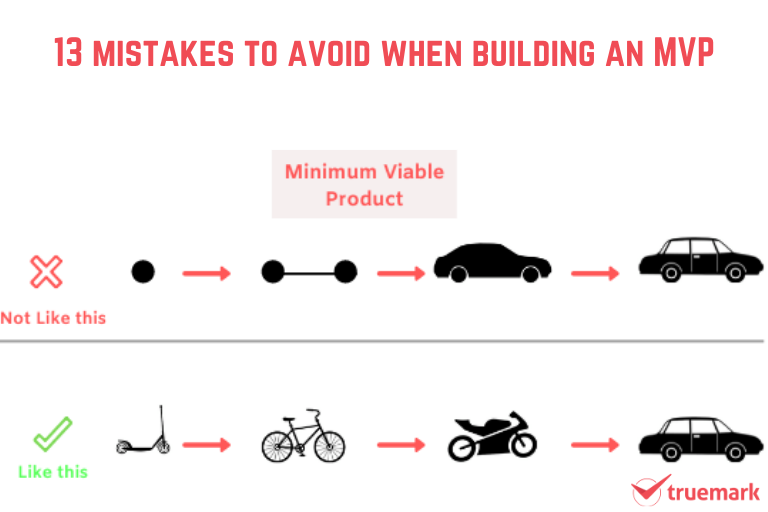Every day developers spend hours and hours developing bug-free software. And a software company spends hundreds and thousands of dollars for the same purpose. They continuously look for ways to improve software quality because fixing bugs and providing a seamless user experience is a game-changer in the software industry.
However, communication gaps, inadequate testing, lacking quality standards and practices, etc., are the primary challenges most software companies face. Or, let’s say they don’t give these issues a thought, which backfires on them later. But, with proper planning, they can solve all these problems effectively and efficiently, improving the quality of the software.
Quality is an essential factor in the development process. Undeniably, developing high-quality software is something that every developer hopes to achieve no matter what. And when software quality comes to mind, everyone talks about testing. However, there are various ways to improve software quality besides testing that every software company should adopt.
So, below, we have listed the 13 ways to improve software quality. Adopting these methods helps you save time and cost. At the end of the day, you will have high-quality software.
13 ways to improve software quality
Document requirements specification
One of the best ways to improve software quality is to document the requirements. Why? Because the entire project relies on requirements. They help you define the project’s scope, milestones, and deliverables and communicate customers’ needs and problems. They assist the development team in developing the expected software.
The documentation contains the project’s purpose, scope, functional and non-functional requirements, etc. As a result, it establishes a strong foundation for a successful project.
Most importantly, it includes detailed processes and features that help the development team develop high-quality software. It helps to keep track of the development process, improving the quality of the product.
At Truemark, we first gather requirements from our clients and then document them to make the following development process smoother to develop high-quality software.
Define quality management plan
Defining a quality management plan is a crucial step in the testing process. It outlines an excellent strategy to assure the quality of the software. It helps the managers to define the quality standards and practices.
Moreover, effective planning helps list essential quality tools and understand how to automate the testing process and what approach to take.
Also, it helps the team to understand the testing process and standards.
The significant advantages of a quality management plan are
- Improved quality
- Fewer risks
- A better understanding of the quality practices and standards.
Without it, the risk of developing the software full of bugs and glitches increase, dissatisfying the clients and the customers. So, to improve the software quality, defining a quality management plan is necessary.
Define realistic deadline
One of the significant factors that hamper the software quality is the unrealistic deadline. It always prevents the development team from developing high-quality software.
Sometimes, because of a tight deadline, it forces the development team to skip the testing process. Even if they test the software, they don’t do it thoroughly because they have the pressure to deliver it on time.
So, it is necessary to set realistic deadlines.
Have an experienced Quality Analyst (QA)
In this competitive environment, the software is developed and released in the market at a tremendous speed. However, not every product is successful, one of the reasons being low-quality.
However, having an experienced QA in your team helps you meet quality standards and requirements. They come up with different test practices and the best approach, making the testing process smooth and developing quality software.
In fact, most development teams don’t have QA. Everything is done by one of the members. But, this doubles the responsibility, hampering the quality of the software. So, it is necessary to have a dedicated QA in a development team.
Design test cases
Test cases are a set of instructions used to validate features. It includes conditions under which a QA and their team test the functionalities of software.
The primary purpose of test cases is to confirm that the software meets the quality standards and performs as expected. Most importantly, they can be reused again and again, saving your time and reducing maintenance costs. Designing test cases guarantee improvement in the quality of software.
Overall, designing test cases improves quality, user experience and enhances customer satisfaction.
Review test cases
Once you finish designing test cases, you need to review them as well. Doing so helps you to ensure their correctness and find any gaps if they have any. This is one of the mistakes the software company fails to realize.
Moreover, reviewing the test cases helps identify early warning signs, assisting the development team in resolving them as quickly as possible, and monitoring quality and project progress. Plus, it ensures consistency in functionalities.
Use testing tools
One of the best ways to improve software quality is using testing tools. They make the testing process easier and more seamless. Plus, the automation makes the work even smooth. There are other advantages as well, like
- Quick error identification
- Saves time
- Faster time to market
- Increases efficiency
- Reduction of repetitive tasks, etc.
With the right testing tools, you can validate the features faster, reducing the feedback cycle. In each development phase, you can easily detect bugs and errors. Most importantly, you will be spending fewer resources and money because of automation.
Implement quality controls
Implementing quality controls ensures that bugs and errors are detected early in the development process and dealt with effectively and efficiently. Below are the types of quality control management processes.
Unit testing
In unit testing, individual units and functions are tested thoroughly. The primary purpose is to validate each feature, which is done during the development of software. The main advantage of unit testing is that it helps to detect errors early.
Integration testing
In integration testing, different software units and modules are integrated and tested as a group. The purpose of doing it is to check how each individual performs when combined.
System testing
In system testing, a fully integrated system is tested to assess how components and features interact in a complete environment. The main advantage of system testing it improves product quality and security.
Acceptance testing
The end-users do acceptance testing. Doing so assures that their needs and problems are fulfilled and solved by the software, respectively.
Regression testing
In Regression testing, every feature and unit is re-tested to ensure that the recent software changes aren’t affecting its performance and existing functionality. Sometimes, after every update, bugs and glitches emerge, affecting the user experience. Whenever such errors are identified, regression testing is done by designing test cases accordingly or selecting one from an existing test suite.
Regression testing ensures that software functions as expected even after every update and change. As a result, it enhances user experience and improves software quality.
Communication between teams
Testing isn’t the only factor that improves software quality. For any successful project, communication between team members is equally important because it promotes coordination. Having a sound understanding between team members helps to detect gaps in the software. Consequently, there will be fewer risks and mistakes.
Moreover, communication assists in complementing each other’s weaknesses. It makes the testing process easier since they can find errors faster, communicate the information, and resolve them quickly.
At Truemark, communication plays a crucial role in improving software quality. To develop quality software, everyone is aware of their roles and responsibilities, guidelines, best practices, etc. They communicate immediately if any bug and mistake arises in the software and fix them faster.
Risk management
Risk management includes identifying known and unknown risks that affect the software quality and mitigating them. They are inevitable. However, knowing the challenges and difficulties is the responsibility of project managers and quality analysts. Controlling them is the key to improving software quality.
So, it is crucial to identify risks priorly, be clear about the requirements, communicate them, and define best coding practices and guidelines.
Define best coding practices
Defining best coding practices is crucial in improving software quality. Not only does it help existing employees, but it also helps to onboard new ones. Having clear guidelines make code readable and easier to maintain. It makes sure that everyone is on the same page and writes in a consistent style.
The best way to implement best coding practices is to train your team and publish it somewhere everyone can take it as a reference whenever they need it.
At Truemark, we have coding guidelines, like naming a variable, pushing code, etc. It helps everyone in the company to code in the same style, making code easy to understand, read, and fix quickly in case of any error.
Plan for changing environment
Software development relies on requirements. However, most of the time, these needs change as time passes. The new trends replace the old ones. As a result, consumers’ tastes and preferences change, and fresh pain points emerge. Then, clients come up with new demands. This affects the development process and quality. So to prevent this, software must be able to adapt to these changes.
While implementing the new functionalities, the development team must ensure that changes to the software don’t affect its performance. So, preparing for the changing environment is crucial to ensure software quality.
These are the best practices to improve software quality. To deliver the best software, testing is a crucial part of the development life cycle. So, a company must thoroughly review its testing process and define solid coding practices to promote continuous improvement to meet its needs and satisfy customers.
How Truemark achieves software quality?
Simply talking, we have a coding guideline that every developer practices. It makes our code easy to read, understand, and maintain. Moreover, we use different tools to communicate with each other and automate the testing process. We implement different testing techniques such as acceptance testing, regression testing, unit testing, etc., to ensure we provide high-quality software to the clients and satisfy them.
We conduct the testing process in each development phase to ensure every feature we implement functions correctly. We make sure that the software is bug-free, fully functional, and fits the business needs and goals.
If you have a great project idea, let’s make it a reality by working together. Your idea, our responsibility to deliver world-class software. So don’t hesitate and please feel free to contact us at any time.
Cover Image Credits: Pch.vector from Freepik



